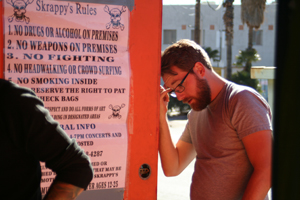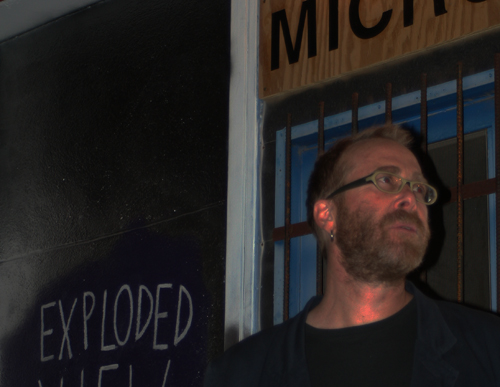The Chemistry of Love & Lust
It all starts with eye contact. Maybe you see each other from across the room at a bar or an office party. There is a tingling in your extremities, a fluttery feeling in your stomach. Your heart beat quickens, your blood pressure rises as you move toward one another and everything else around you disappears. The sparks fly and later, as you recount the story to your friends and family members, you tell them that you can’t explain it, but that there was chemistry between you.
It turns out that you are probably more right than you know.
According to the 2012 book, The Chemistry Between Us, recently released on paperback by Current Publishing, the entire process of falling in love may be governed by just a few molecular compounds primarily within the limbic system of your brain. The limbic system is an area near the base of the brain made up of several different structures which are collectively responsible for producing emotional responses to external stimulation along with hormone regulation and production. It is interactions between your limbic system and other areas of the brain, for example, that tell you whether it’s time to sit down for a meal, run from a hungry tiger, or get ready to have sex.
Donatella Marazziti, Director of the Laboratory of Psychopharmacology at the University of Pisa in Italy says that the activation of the amygdala (a pair of small, almond-shaped structures within the limbic system) during attraction proves that “attraction is a primary emotion, like fear and anxiety,” meaning that it is linked to the survival of the species. This activity in the amygdala (which has been linked to the “fight or flight” response) means that your body reacts to sexual stimuli before the brain can even discern the quality of the input (e.g., is it trying to hug you or kill you?). The reward system in your brain is closely linked. Rewards in the form of dopamine and opioids (the brain’s form of heroin) are what motivate us to eat when we are hungry, find water when we are thirsty, and prime us for procreation while we flirt.
Says Larry Young, co-author of The Chemistry Between Us and Director of the Center for Translational Social Neuroscience at Emory University, “dopamine plays an important role in excitement and the anticipation that something might happen.” Not only does this dopamine play a part in your experience of short-term pleasure, but it also effectively mutes the processes of the prefrontal cortex—the area of the brain responsible for rational thought. Men under its influence are less likely to be distracted by loud noises; women’s pupils dilate and they begin smiling unconsciously. We experience the release of this dopamine as excitement; Young calls this “appetitive reward.” But either way, with this reward comes a strengthening of the appetite. In fact, drug users experience the same appetitive dopamine surge when looking at photos of drug paraphernalia as when looking at pictures of potential sexual partners.
Dopamine is great for that initial rush, says Young. And it is probably responsible, along with alcohol (also a dopamine releaser), for the majority of one-night-stands. But as far as love is concerned, dopamine will only take you so far. Our propensity for monogamous pair bonding—what regular people might call a loving relationship—comes from another chemical: oxytocin. Oxytocin is the chemical released en masse in new mothers when they meet their babies for the first time and is present in breast milk, helping mother and child to bond. As it turns out, it is also responsible for bonding in relationships between lovers. Young explains that oxytocin is released during conversation, periods of prolonged eye contact, and when we make physical contact—all bedroom prerequisites with respect to the art of flirting.
As the night goes on, a few more drinks, some dancing, and the oxytocin and dopamine are flowing. Now real bonding is possible. Young explains that the “oxytocin is making social cues more salient—basically it’s linking the cues of your partner… with the reward system, which is dopamine.” Men experience a spike in testosterone. The medial preoptic area (MPOA)—part of the limbic system—signals the nervous system to send blood to the genitals in both sexes. When stress is low enough and all of the environmental cues fall into place (are you alone in your bedroom yet?) a couple can really get to know each other.
“Sex is the best releaser of oxytocin,” says Young. With orgasm comes an immediate drop in dopamine (hence the falling motivation in men to get more sex after orgasm) and oxytocin is released into the blood and brain in greater quantities along with endocannabinoids, opioids, and serotonin—all of which produce a feeling of calm satisfaction.
Much like with drug addiction, all of this stimulation can lead to a need for more. Says Brian Alexander, Young’s co-author on The Chemistry Between Us, “once that bond gets formed, our brains literally change; physically, our brains change to help maintain that bond.”
Essentially, people in love become “addicted” to their partners, Alexander says. This is why love may spur us to do the myriad of wacky things that love makes us do (do we need to provide a list?). Marazziti performed a study which linked the serotonin levels of individuals in love to those of people suffering from OCD.
“When you are in love,” she says, laughing slightly, “you are a little bit crazy.”
Probably not something we needed science to tell us.












Also find us on...